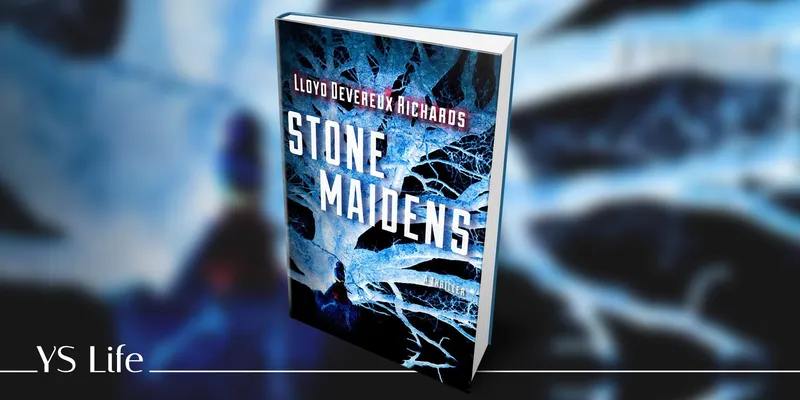Tiktok made Stone Maidens famous, but it doesn’t live up to the fame
Stone Maidens is sufficiently engrossing and while Richards’ determination to write a novel like this one is admirable, the book itself could have been better.
For the Richards family, everything changed when Marguerite decided to post a TikTok video to promote her father’s book. In the viral clip, she is seen pitching the book to the world, describing how Lloyd Devereux Richards wrote Stone Maidens the entire time he was raising three kids.
In it—Marguerite recounts—her father was pleased with the fact his title was published, despite not selling a massive volume of copies. She tells her TikTok audience, she wished the title had sold more.
Her wishes were soon granted. Several people on the internet purchased Stone Maidens in droves, making it the number one best-seller on Amazon, and overnight, turning it into a sensation.
While the story of the internet turning around this silent title into a bestseller is heartwarming, less can be said Stone Maidens. His juxtaposition of a serial killer’s deviant mind to remote and descriptions of complex tribal-cultural practices creates fertile ground for a crime thriller. However, his weaknesses lie in characterisation.
For instance, the book’s heroine, Christine Prusik, is a flawed-but-determined investigator. In the course of the story, her actions are unsure and not quite convincing, making it difficult to empathise with her.
Credit to Richards’ for using the knowledge he gathered on the job in the judicial system in the US to build the ground for his crime thriller. He has researched and drafted published legal opinions including an appeal for a convicted serial killer.

The plot is made further complex with its geographical setting—a space like Papua New Guinea is less known world over. This adds a layer of complexity to how the murders are solved. With that said, the connections drawn rely on coincidences which isn’t a very clever tool to make a plot enticing.
At its core, Stone Maidens is a story chronicling human depravity and the impact of mental illness on human behaviour. Prusik has to investigate a series of gruesome murders of young women. Along the way she finds traces of Papua New Guinea’s tribal rituals within the killer’s modus operandi.
Meanwhile, the entire time, she finds herself having to deal with the workplace. Prusik has judgemental male bosses and finds herself in the middle of solving high-profile serial investigations, all while dealing with the onset of her own anxiety issues.
One also finds that Prusik has her own connections with Papua New Guinea. As a forensic anthropologist she had undergone some trauma in the past. She is found having to separate those memories from her formal investigation—not letting her past affect her judgement and ability to catch a serial killer.
As a reader, it is easy to relate to Prusik’s battles in the workplace. Men in law enforcement and investigations tend to be chauvinistic. Her constant conflict of dealing with her feelings over a past fling with her immediate boss calls-up tropes in signature Sidney Sheldon novels.
Richards has also tried to create urgency, but the rapidness in his writing gets tedious in parts.
The detailing also appears flawed. Like in the medications prescribed for mental conditions or responses of local police and sheriff’s departments in the USA. An attempt at detailing can be seen as he does his bit to embellish the heroine’s actions with tiny elements like the brand of her footwear on field and the choice of fabric she opts for while dressing up for work. The style is also evocative of Tilly Bagshaw or Julia Crouch.
It is most powerful in his descriptions of FBI investigations on sites of murder, and the work of a forensics lab. The research is immaculate as each officer has something to add to an investigation that spans wide swathes of forested and swampy land. Prusik is found competing with the FBI officers in her team and combating red tape, make the book read as effectively as a TV thriller.
However, a character requires more than exterior elements to emerge clearly. Prusik is not given enough time to clearly express the root of her trauma and instead tight-paced events are given a priority.
While one could give it a pass otherwise, in procedural books, these details become important.
But perhaps, his most ineffective characterisation is that of the perpetrator of these murders. While the character is confused, quickly triggered and aggressive, he doesn’t come across as a flesh-and-blood person capable of evoking menace. One can’t help but feel like there’s too much happening too soon and with a tendency to repeat itself, simply because
the writing doesn’t flow.
The book redeems itself of these flaws when it progresses to the actual sites of heinous crimes—through the forested ravines of Southern Indiana. The narrative traverses Chicago to the muddy, slushy, and humid terrain of forests around this region. It lets the reader know of the difficulty of conducting crime scene investigations here.
Most crime thrillers tend to have similar conclusions and Stone Maidens isn’t different. Prusik’s personal difficulty with trauma and the killer’s mental condition present an interesting dichotomy for a reader. How far can what one imagines push actions in the real world?
A crime thriller is normally judged by its ability to keep you turning the pages. Stone Maidens is sufficiently engrossing and while Richards’ determination to write a novel like this one is admirable, the book itself could have been better.
Rating: 3/5
Edited by Akanksha Sarma







